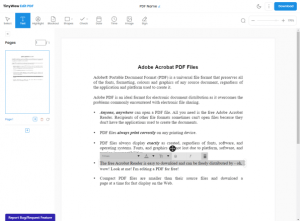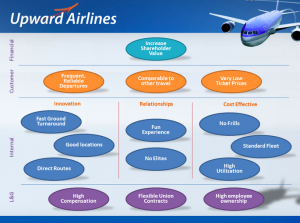Selling The Value Of AI To Your CMO
Artificial intelligence (AI) is transforming the marketplace at a phenomenal pace. Brands that embrace AI are fueling business decisions with powerful data insights to expand market share. According to Forrester, brands that effectively master AI will out-compete their peers by $1.2 trillion per year by 2020.
From a marketing standpoint, AI gives brands a clear advantage in understanding and connecting with customers, personalizing experiences at scale, and maximizing campaign performance.
Despite this opportunity, only 32% of marketing organizations are taking advantage of AI, according to this ICUC survey.
The good news is that AI doesn’t have to be overwhelming or costly. Organizations can start small, pilot applications, and scale growth as needed. The most important factor is getting started today.
Your CMO may still need some convincing. So how do you sell the value of AI to leadership? Here are some tips to help you lay the foundation for this critical conversation.
Articulate how AI can help
Be prepared to demonstrate exactly how AI can propel your marketing strategy to drive the results you’re after. AI can add value in three distinct areas.
1. Building customer connections: AI helps brands build natural connections with consumers across multiple channels using technologies such as chatbots and natural language processing. Consumers get the exact information that they need at the time they need it. Examples include asking a digital assistant to add paper towels to a shopping list or using a chatbot to get a support question answered.
2. Personalizing experiences: From custom content to highly personalized recommendations, AI enables marketers to provide ultra-targeted experiences to consumers. Some great examples of this include music suggestions on Spotify or product recommendations on Amazon. Both brands use consumers’ past purchases and search history.Furthermore, search platforms like Bing have long been using AI algorithms to understand audience intent, guide ad selection, and deliver personalized results. Leveraging search engine marketing is a key way to deliver greater personalization through AI.
3. Identifying new customers: Platforms like Bing are increasingly leveraging AI and automation to help marketers optimize campaigns and performance and convert data insights into new customers. AI and machine learning can analyze huge volumes of data in no time and provide predictive insights that take the guesswork out of business decisions and clarify consumer intent. AI also enables marketers to automate tasks like keyword bidding and ad optimization. Meanwhile, consumers get far more relevant ad content that is helpful to them and make them more likely to become customers.
I mentioned previously that brands will have to find new ways to engage consumers, especially if they aren’t the incumbent. Take advantage of these key opportunities to stand out in the next couple years.
To sell this idea, you will need to go beyond what AI offers in general and state specifically what AI can do for your growth, goals, and budget.
Articulate your goals and challenges
Demonstrating to your CMO that you have a clear understanding of your brand’s goals and challenges — and how AI can drive impact — is key. Make sure that you have metrics available to show the current state, trends, and opportunities to meet those goals and overcome challenges.
If your organization is looking to identify higher-quality leads, be prepared to show how lead quality is being measured, interactions that boost lead quality, and opportunities to increase the types of brand interactions through AI. If your challenge is to provide consumers with more personalized offers or services, be sure you have the supporting metrics and potential ways that AI can drive results.
Another tip: If you can, find case studies showing how other companies—especially your competitors — are achieving results through AI. Demonstrating how the competition is using AI can be extremely compelling.
Articulate the language of AI
Understanding the language that describes these deep insights and data analysis is important. So, here are some key terms you should know.
- Churn prediction modeling: This handy AI tool identifies disengaged segments and can give you insights around the likelihood of churning so that you can take measures to reconnect with these customers.
- Predictive search: This powerful tool looks at search history and behaviors to proactively serve up results in anticipation of your next search.
- Predictive analytics: Predictive analytics is like a crystal ball for marketers. It anticipates customer actions and informs marketing decisions and actions.
- Auto-bidding: This tool saves time managing ad campaigns by doing the bidding for you on new advertising channels.
- Programmatic advertising: To save even more time, programmatic advertising can buy and sell digital ads for you, optimizing your bids and creative.
A smart analysis showing both the benefits of embracing this technology as well as the risks of getting left behind is key to selling the value of AI to your CMO. AI is a competitive differentiator and being able to articulate how this technology can directly accelerate your organization’s goals is key to marketing success.
(80)








